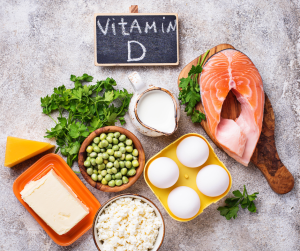- Open:Weekdays: 8:30 am – 5:30 pm, Saturdays: 9:00 am-2:00 pm
- Email: info@youdrugmart.com
Vitamin D deficiency symptoms affect millions of people worldwide, yet many remain unaware of the impact on their health. From fatigue to frequent illness, these symptoms can disrupt daily life and increase long-term health risks. Nevertheless, you can overcome them with simple, science-backed hacks that restore your vitamin D levels and improve your well-being.
Vitamin D deficiency symptoms often appear subtle but can lead to serious health issues. According to Healthline, nearly 42% of U.S. adults have low vitamin D levels. This number climbs to 82% among African Americans and 63% among Hispanic adults. Despite these alarming statistics, many people ignore the signs.
Fatigue is one of the most common symptoms. In a study of 480 older adults, researchers found a strong link between low vitamin D and persistent tiredness. Dr. Michael Holick, a leading vitamin D researcher, explains, “Vitamin D is essential for cellular energy. Without it, people feel drained and sluggish.”
Bone and muscle pain also signal deficiency. Vitamin D helps absorb calcium, which strengthens bones. Without it, bones weaken and muscles ache. A 2018 study confirmed that low vitamin D levels contribute to chronic back pain. Moreover, mood swings and depression often stem from low vitamin D. The brain contains vitamin D receptors that regulate serotonin. A 2019 review found that supplementation improved symptoms of depression in deficient individuals.

You don’t need drastic changes to feel better. These simple hacks can help you overcome vitamin D deficiency symptoms quickly and effectively.
Sunlight is the most natural source of vitamin D. Your skin produces it when exposed to UVB rays. Aim for 15–30 minutes of sun exposure daily. Morning or late afternoon sun is safest. Dr. Holick recommends exposing arms and legs without sunscreen for short periods to boost production.
Even during winter, try to spend time outdoors. If you live in a cloudy region, consider using a UV lamp. These devices mimic sunlight and stimulate vitamin D synthesis.
Although food alone may not meet your daily needs, it helps. Include these in your diet:
According to the National Institutes of Health, adults need 600–800 IU of vitamin D daily. These foods provide a solid foundation. However, always check labels for fortified options. Many cereals and plant-based milks also contain added vitamin D.
Supplements offer a reliable way to restore levels. Most adults benefit from 1,000–2,000 IU daily. However, consult your doctor before starting, or take a blood tests help determine the right dose.Over-supplementation can cause toxicity.
Adults with severe deficiency may need 6,000 IU daily for eight weeks or 50,000 IU weekly. Once levels normalize, doctors recommend a maintenance dose of 2,000 IU. Magnesium also helps activate vitamin D, so consider adding it to your routine.
Physical activity boosts Vitamin D absorption and bone health. Try walking, jogging, or yoga in the sun. Movement also improves mood and sleep. According to MedicineNet, optimal physical activity ensures vitamin D reaches bone tissue. Even short walks during lunch breaks make a difference. Combine exercise with sunlight for maximum benefit. This habit not only improves vitamin D levels but also enhances overall fitness.
Track your symptoms and energy levels weekly. Maintain a journal or use a health app. If fatigue or pain persists, revisit your doctor. Regular checkups ensure your strategy works.
Blood tests also reveal your vitamin D status. Most labs consider levels below 20 ng/mL as deficient. Levels between 21–29 ng/mL are insufficient. Therefore, aim for 30–50 ng/mL for optimal health.
Ignoring vitamin D deficiency symptoms can lead to long-term problems. For example, slow wound healing may indicate low levels. A study found that people with leg ulcers healed faster after taking 50,000 IU weekly for two months.
Hair loss is another overlooked symptom. This is because, Vitamin D supports hair follicle health. Without it, hair thins and falls out.
Sleep issues also arise as a result of Vitamin D deficiency.. Additionally, research also shows that low vitamin D disrupts sleep cycles and reduces sleep quality.
Frequent illness is also a major concern associated with Vitamin D deficiency. This is because, Vitamin D boosts immunity and helps fight infections. In fact, a 2020 review found that supplementation reduced respiratory tract infections, including colds and bronchitis.
Dr. Cedric Garland, a cancer researcher, states, “Adequate vitamin D may reduce cancer risk by up to 50%.” While more studies are needed, the evidence supports maintaining healthy levels.
Prevention is better than cure. Here’s how to stay ahead:
In conclusion, Vitamin D deficiency symptoms affect your energy, mood, and immunity. But you can overcome them with simple hacks. As mentioned earlier, sunlight, smart eating, supplements, and exercise make a powerful combination. Stay proactive. Monitor your progress and consult your doctor. With consistent effort, you’ll feel stronger, happier, and healthier.
